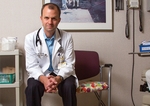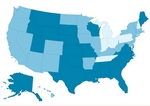business
After spate of closures, retail clinics may be on upswing
■ An industry analyst predicts that 200 clinics will open each year through 2015.
By Pamela Lewis Dolan — Posted Feb. 25, 2011
- WITH THIS STORY:
- » Related content
After a year of retail clinic closures nearly matching the number of openings, 2011 may be the start of a rebound for the retail clinic market that will continue through 2015.
Tom Charland, CEO of Merchant Medicine, a retail clinic consultancy firm in Shoreview, Minn., published a report in January stating that the number of retail clinics could grow from 1,220 to more than 3,300 by 2015. But more likely, he predicted, the growth will average out to around 200 new clinics a year, for a 2015 total of nearly 2,300.
Charland publishes a monthly market report on the retail clinic industry and a yearly market prediction report that follows a symposium of retail clinic operators.
He said operators have cited health system reform and a shortage of primary physicians as reasons to expand, but he added that they might not increase clinic traffic as much as companies think.
MinuteClinic announced after the health system reform law was enacted in 2010 that it planned to double the number of clinics within five years in response. The company is the largest chain with 453 clinics, followed by Walgreens' Take Care, which operates 357 clinics. Take Care also announced expected growth after the enactment of health system reform last year. It netted only two new clinics since then and has made no predictions for 2011.
Despite the uncertainty about whether health system reform and the health insurance mandate that comes along with it will stand up to constitutionality questions, Charland doesn't think it will have an effect either way. The insured and uninsured are using the clinics at an equal rate, so adding more insured patients to the mix won't necessarily mean more retail clinic patients, he said.
Charland's prediction downplays the impact of a physician shortage. Though nurse practitioners have stepped in where primary care is lacking in some areas of the country, the rise of accountable care organizations may lead to more patients receiving care from their homes, as telemedicine solutions will play a significant role in the ACO model.
"If parents and their children don't have to leave the home to get medical care, they won't," Charland wrote in the report.
Partnering with ACOs may be the key to success for some clinic operators.
"Being first to market with virtual health care services will also be characteristics of those who thrive," Charland wrote in his report. "Operators who simply rely on treating the low end of acute care ... will fail."












